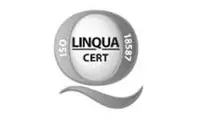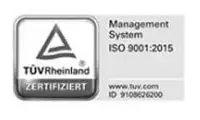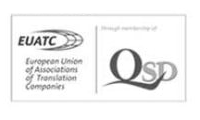AI-based audio, video and multimedia solutions with mpü
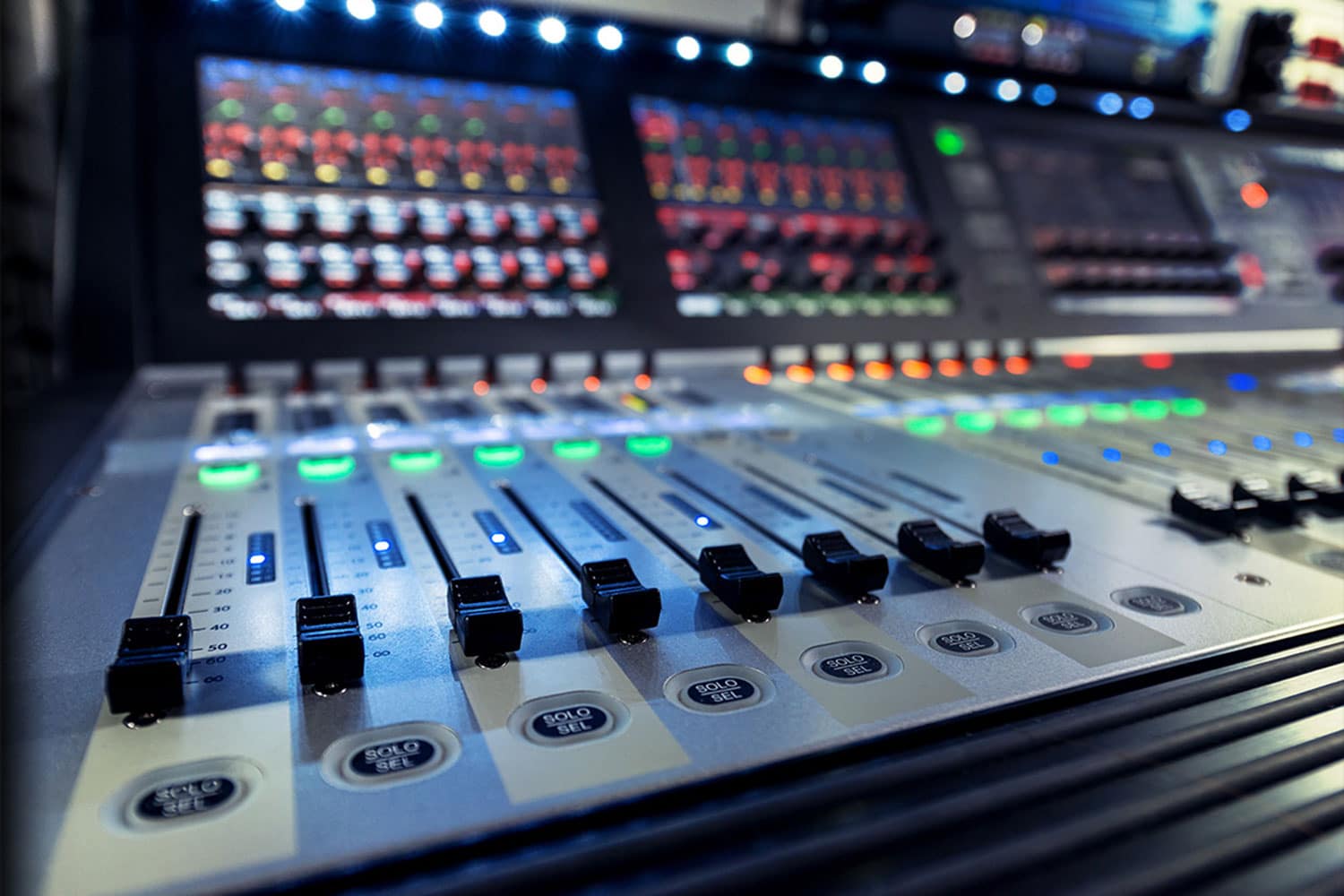
Localisation of multimedia content
We make your videos understandable around the world
In a globally linked world, multimedia content is at the heart of all successful communication, whether that’s in the corporate world or the education sector or for entertainment. Videos draw attention, invite the viewer to interact and strengthen your brand.
For a strong online presence, multimedia content like videos has long been essential: they ensure messages last longer, create more interaction and increase your visibility online.
But you can only unlock the true potential of multimedia content if you are understood around the world. You can do this through professional multimedia localisation that embodies your videos in a precise and convincing way in every language.
mpü puts your message on screens around the world
Our services in the field of multimedia include:
Voice-over (text to speech):
If you don’t have a transcript, our AI-based system will create a full transcript of the spoken text and apply timestamps so each passage is allocated to precisely the right moment in the video.
Subtitling:
Our language experts check and validate this AI-generated text to ensure that even difficult passages are correctly transcribed and possible misinterpretations are eliminated.
Translation
During translation, checks are carried out to determine whether the text will ultimately be written in the subtitles, spoken offstage or said in front of the camera. Depending on the variant, the text length and word selection need to be adapted.
Synchronisation
Translation and sound recording are very complex and challenging for synchronisation because we have to take into account lip synchronicity with the person shown in the video (e.g. in interviews when the person who is talking can be seen).
Multilingual videos – limitless opportunities. Discover our multimedia solutions.
Why choose mpü for multimedia localisation?
Your advantages at a glance
- Everything from a single provider: whether you need advertising videos, online handbooks or audio guides, we work with all types of multimedia content regardless of the format.
- AI-based processes: our modern technologies reduce the manual effort to a minimum and accelerate the entire process. This means you will receive your localised videos quickly and for a great price, without compromising on quality.
- User-friendly solutions: our service is designed to be very easy for you. Simply upload your videos to our customer platform and we will take care of the entire localisation process for you.
- Comprehensive localisation: you need more than just translations for your multimedia content to have its full impact in every target language. Our experts take into account cultural nuances so your multimedia content is authentic, appealing and trustworthy in all languages.
Subtitling:
Speech-to-Text (STT)
Precise translations for maximum accessibility
Did you know? Around 85 percent of all social media users watch videos without sound (source: https://digiday.com/media/silent-world-facebook-video/). Through multilingual subtitles, you are utilising the full potential of your video content and making it accessible for a wide audience, including people with a hearing impairment or those who speak a different language.
Multilingual subtitling with mpü: our AI-based processes
The manual effort involved in subtitling can be huge. With the flexible, cost-effective mpü solution, you save time and resources: our AI-based processes give you videos that are ready quickly in any target language you need.
Our workflows combine the expertise of our experienced project managers and the latest AI tools, ensuring consistently high quality.
We give you an overview of our AI-based subtitling process below:
1. Speech detection
Just upload your video via our customer platform. We are happy to work with all common video and subtitling formats.
If there is no written transcript and no subtitle file with the original text for the words that are spoken or that appear on the screen, we are happy to prepare this for you.
2. Transcription
In the next step, the transcript that forms the basis for the subsequent translation is created.
Transcription
If you don’t have a transcript, our AI-based system will create a full transcript of the spoken text and apply timestamps so each passage is allocated to precisely the right moment in the video.
Validation
Our language experts check and validate this AI-generated text to ensure that even difficult passages are correctly transcribed and possible misinterpretations are eliminated.
Finalisation
Taking into account your requirements and conventions (inserting or leaving out filler words, formatting, etc.), the text is then finalised and sent to you for verification.
The transcript is not just the source text for our translators to work from. Online, transcripts help search engines (SEO) to search your video content and find you. Thanks to the newly achieved accessibility, your online performance will also improve, because search engines value increased user-friendliness.
Perfect harmony between picture and language: you can rely on mpü.
Translation,
synchronisation +
quality control
1. Translation
After the transcript is created, the text can be translated into all desired target languages. This can be done in two different ways.
Human translation
We recommend translation according to DIN EN ISO 17100 including revision by a second independent translator to achieve a result that will prevent subsequent correction work.
A mistake that the speaker only notices in the sound studio can be more expensive than the entire translation.
Machine translation + post-editing
Of course we can also translate your texts using AI. The result is then also checked again by a specialist translator in a post-editing process.
It is important to note here that the translated text sometimes sounds a little more awkward than in the original video. Explanatory videos are particularly suitable for this, though.
With both options, we ensure that your company-specific translation memories and terminology databases are used to ensure brand consistency and the highest quality. After the translation, we perform our tried and tested quality assurance check.
2. Integration and synchronisation
Once the translations have been validated, the subtitles are included in the video. We check for precise timing and make sure that the subtitles are easily legible. The text length and the positioning on the screen are optimised in such a way that the viewer has enough time to read the text without being distracted from the visual content.
3. Finalisation and customer verification
Before the final delivery, we offer you the chance to check the finished subtitles and translations. Through our cloud-based platform, you can view the subtitles and translations, add comments and if necessary make changes. After you have approved the subtitles and translations, we export the video into the format you want.
Your advantages at a glance
Bigger audience:
Since many users view videos without the sound, subtitles make your content accessible to a wider audience.
Accessibility:
Professional subtitles ensure that your messages can be understood by people with hearing impairments too.
Optimised online presence:
By providing transcripts and subtitles, you benefit from improved visibility in search engines and increased user-friendliness.
One of our services might solve your problem
Voice-over:
Text-to-speech
(TTS)
Content stays in our memories better when we hear it in our mother tongue. With our voice-over solutions, we help you to make your videos accessible in all desired languages so you can reach a wider audience.
With voice-over scoring, an audio track is synchronised with the visual elements of the video. Depending on the project and the intended use, the recording can later be placed over the original audio track or integrated into the video as a single audio track (e.g. for documentaries as a speaker’s voice from offstage).
Voice-over in every language –
the tried and tested mpü process
Our voice-over solutions are based on a sophisticated, AI-based text-to-speech (TTS) process that can use both human and synthetic voices. The process includes several steps that ensure perfect synchronisation and localisation quality.
1. Preparation of the text
Before the actual speech conversion starts, we ensure that the text is prepared as well as possible. The subtitles or transcripts are formatted in such a way that they can be processed by our TTS engine without any problems. In this phase, our language experts insert breaks and emphasis that ensure that the spoken word sounds more natural and livelier. The goal is to reproduce speech that is linguistically accurate with the correct content.

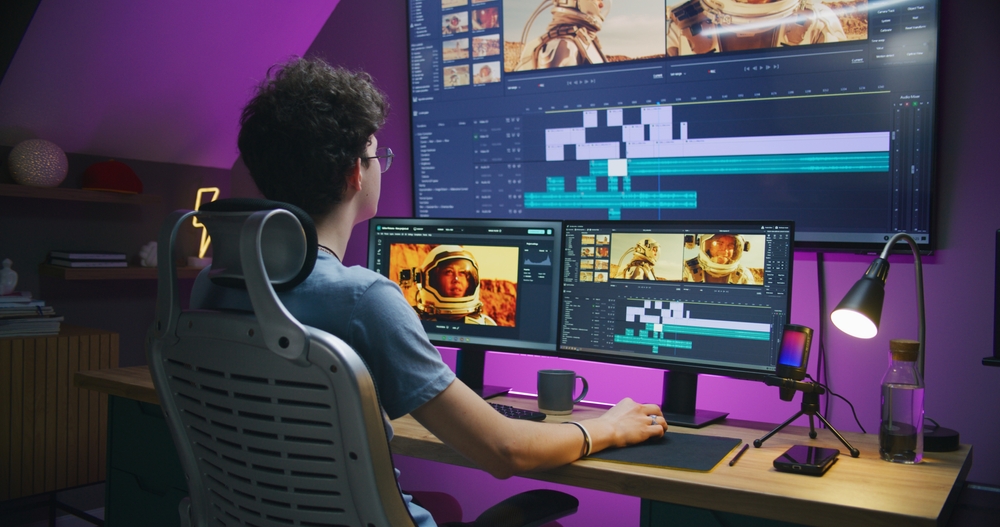
2. Selection and adjustment of the voice characteristics
Serious, youthful or fresh and informal? The choice of voice is critical to the effect of the voice-over. Depending on the project, the following options are available:
- Professional speaker: real human voices bring your messages to life and give your video a particular authenticity. By casting speakers, we ensure that the tonality, gender and timbre are ideal for the content and the target group.
- AI-based voices: alternatively, we can use synthetic voices generated by innovative TTS technologies. Modern TTS systems offer a wide range of voices that sound human and likeable and represent different accents, genders and age groups.
- Individually tailored AI voice: modern TTS systems enable additional adjustments to the voice to make them seem even more individual and natural-sounding.
3. Creating the voice-over and synchronisation
As soon as a voice has been chosen, we start to create the voice-over. This process comprises two steps:
- Uploading the subtitles: A file with the subtitles (e.g. SRT, SUB, VTT) is uploaded. Then we choose the language, voice, speech speed and pitch.
- Synchronisation: The TTS software reads the subtitle format and synchronises the audio track with the visual elements of the video. Our experts ensure that the speech reproduction matches the visual elements of the video exactly.


4. Technical processing
To achieve optimal sound quality, the audio track goes through careful technical processing:
- Audio processing: in this phase, we remove unwanted sounds like clicks, plops and breathing sounds.
- Mastering: sound effects and volume are also adjusted so the sound is clear and pleasant regardless of whether the user is wearing headphones or using a loudspeaker.
- Synchronisation: when synchronising the audio track with the video element, each visual elements is matches exactly to the pace of the speech, resulting in a fluent, harmonious end result.
5. Quality control
In the next step, our experts check the entire voice-over for clarity, comprehensibility and harmony with the video.

6. Finalisation and export
Before we deliver the video to you, there are two final steps:
- Preview and adjustments: our experts check the preview of the video. If necessary, we make any final corrections.
- Export: the video is then exported in the desired format and is ready for use immediately.
AI-based multimedia localisation with mpü
With mpü, your multimedia content will be successful in every language. Our team of language and technology experts ensures that your messages come across in a precise and authentic way everywhere. Rely on customised localisation solutions that allow your content to be understood around the world, regardless of target group or language.
Benefits of the voice-over services from mpü
Speed
The conversion of text to speech and the synchronisation with the video is quick and efficient.
Accessibility
Content can be created in several languages, increasing the scope and accessibility.
Cost-effectiveness
The use of AI reduces the costs compared to the use of human speakers.
The right solution for every format:
- Education and training videos: convert training documents, webinars and tutorials into accessible, multilingual learning content that communicates knowledge around the world.
- Marketing and advertising clips: give your brand a strong voice on the global market with synchronised and localised videos that underline your message.
- Corporate communication: ensure that important information within your company is understood around the world and communicated in a consistent way.
- Social media content: strengthen your presence on YouTube and other social media, increase your reach and promote interaction with your brand.
- Multimedia games: inspire your users around the world with localised content that takes into account cultural subtleties and linguistic nuances.
- Online handbooks and video guides: combine images and sound to ensure your instructions are understood around the world and maximise the added value of your video material.

